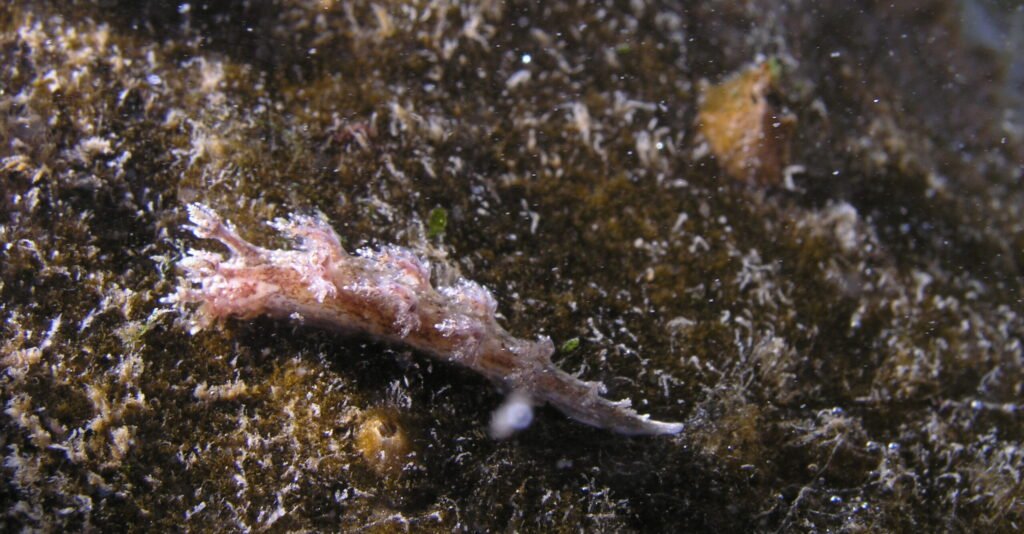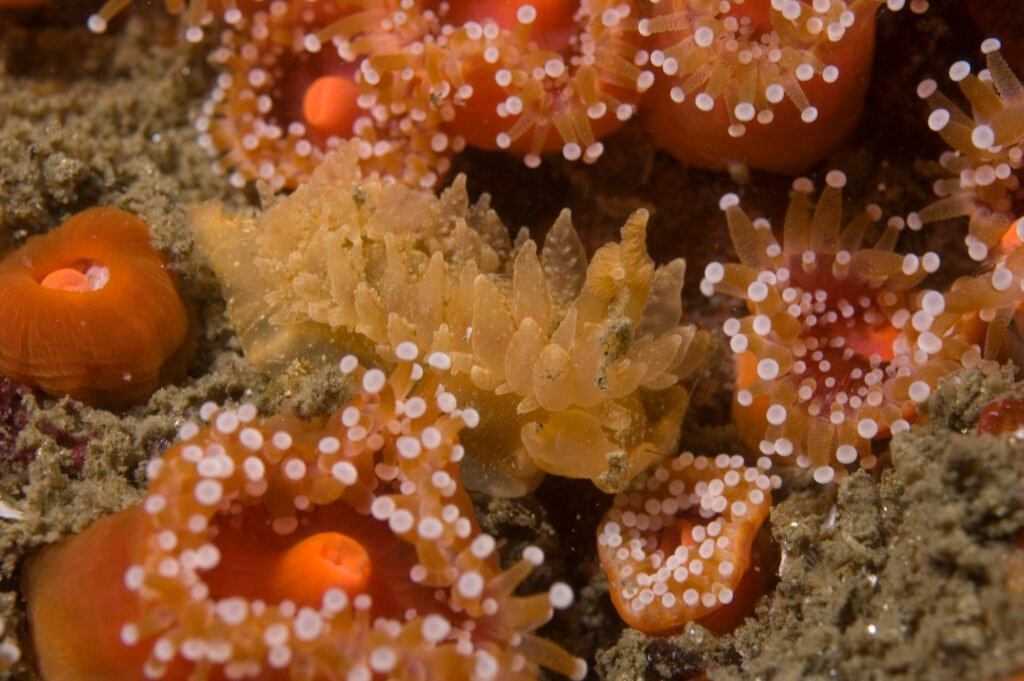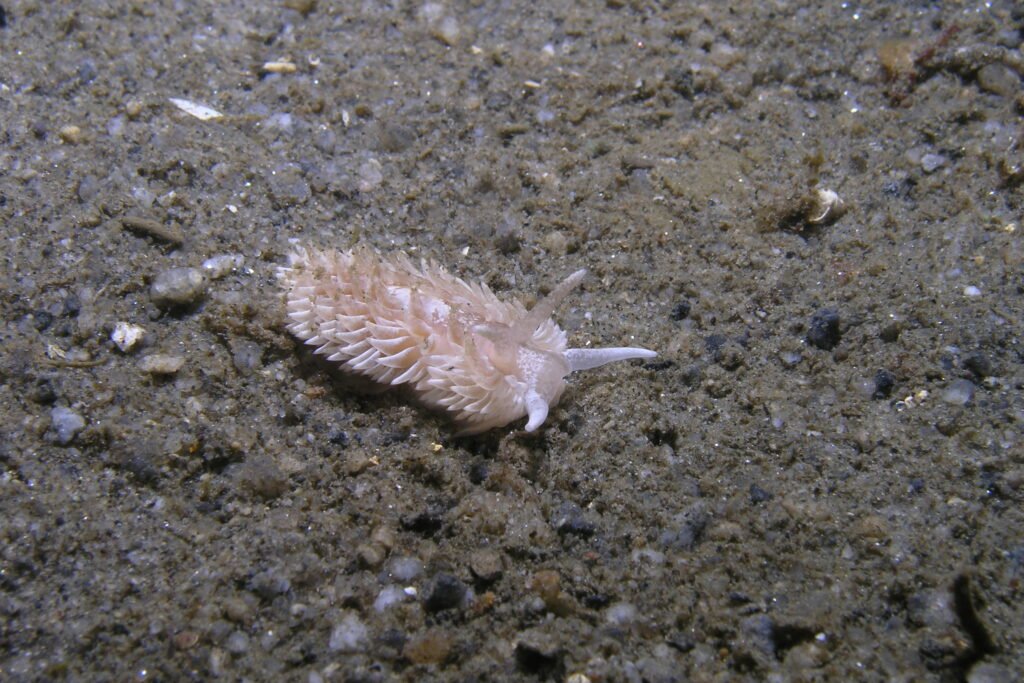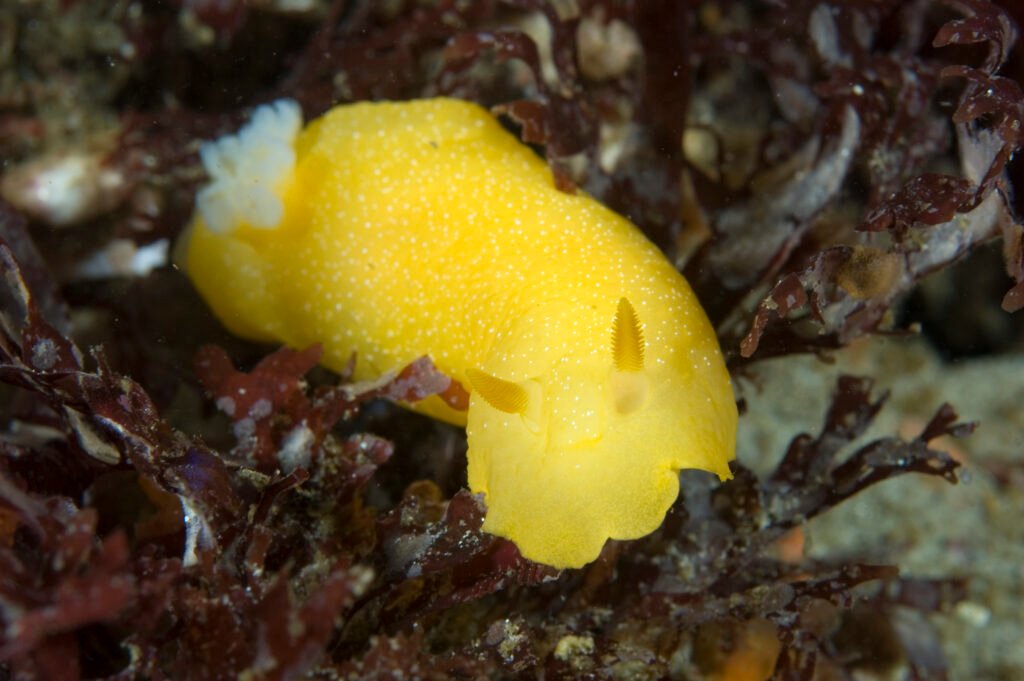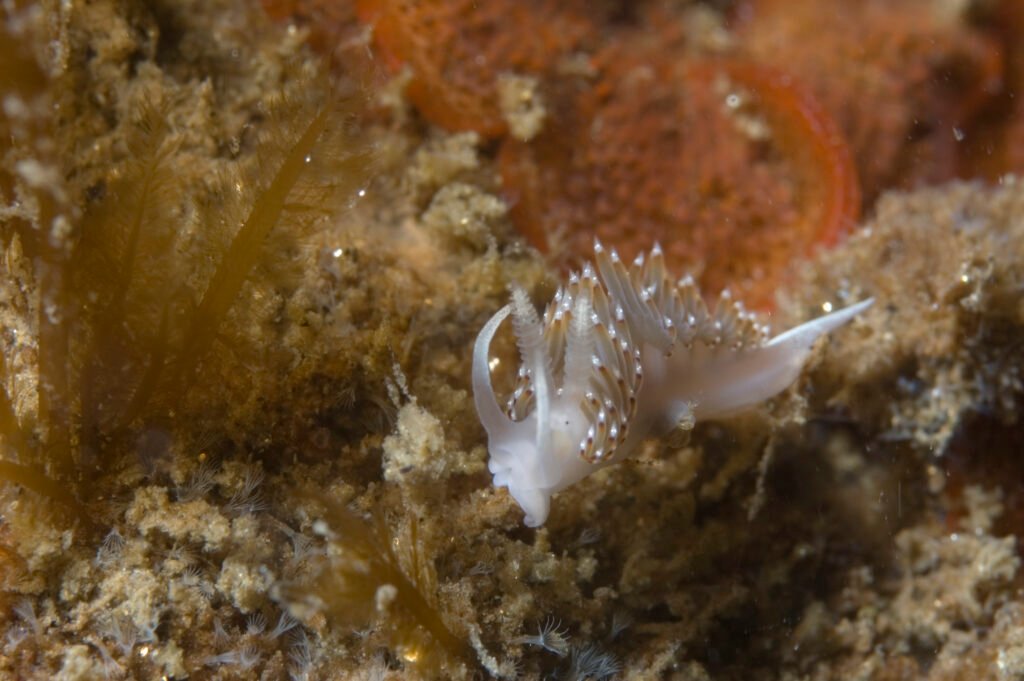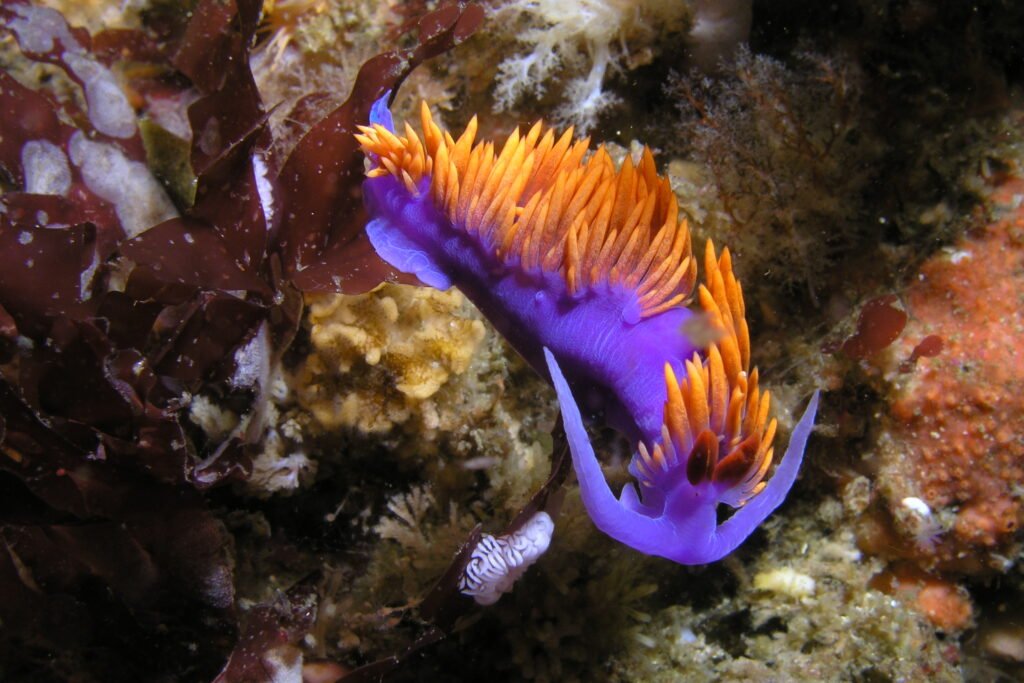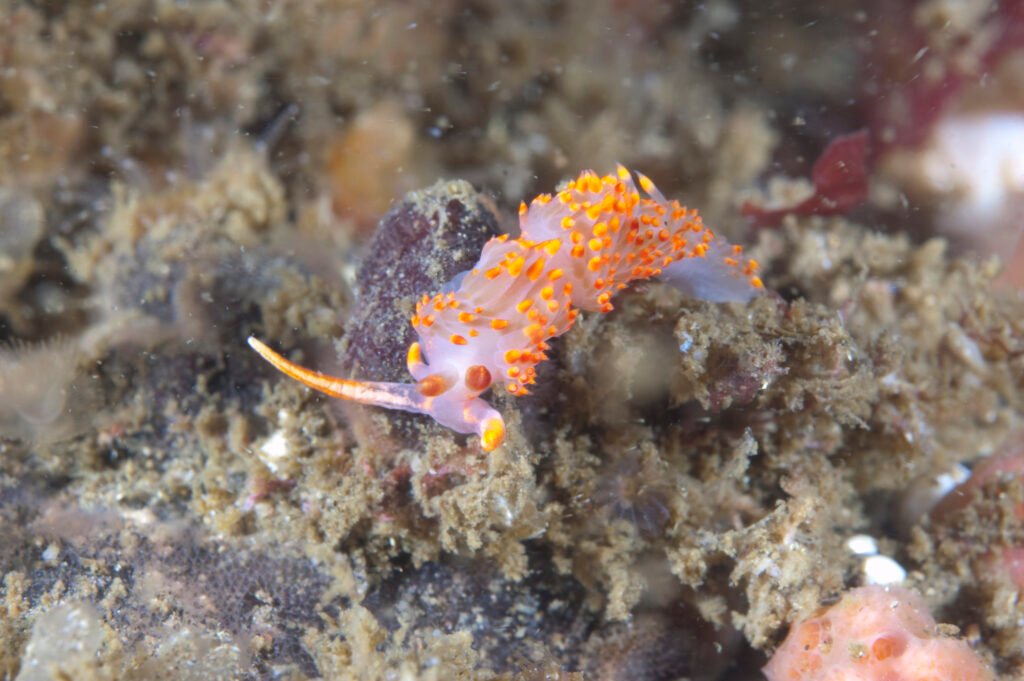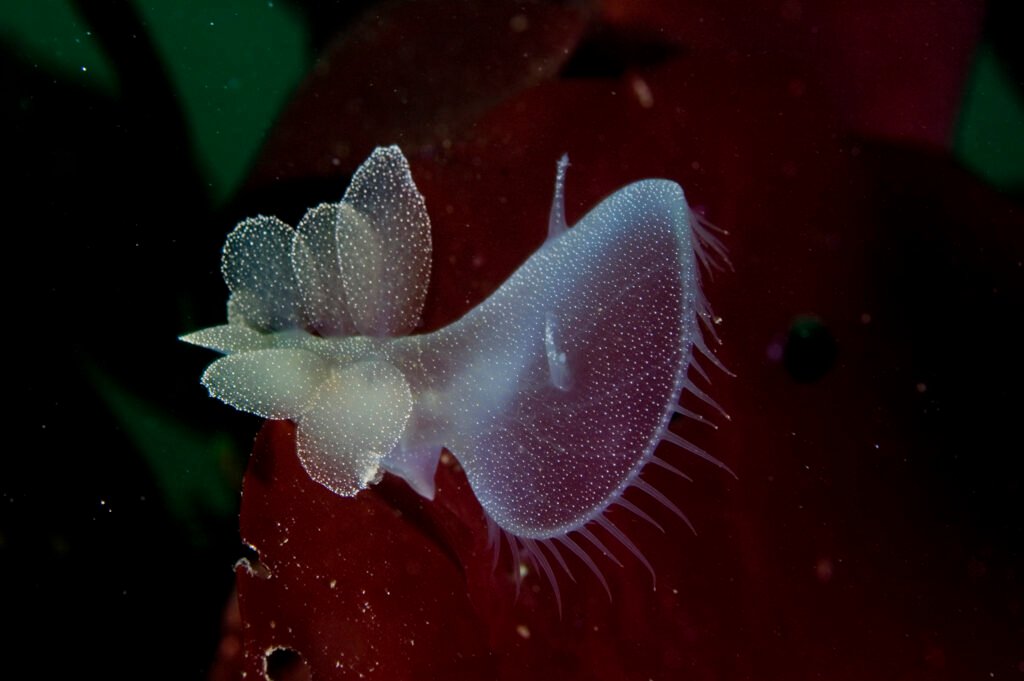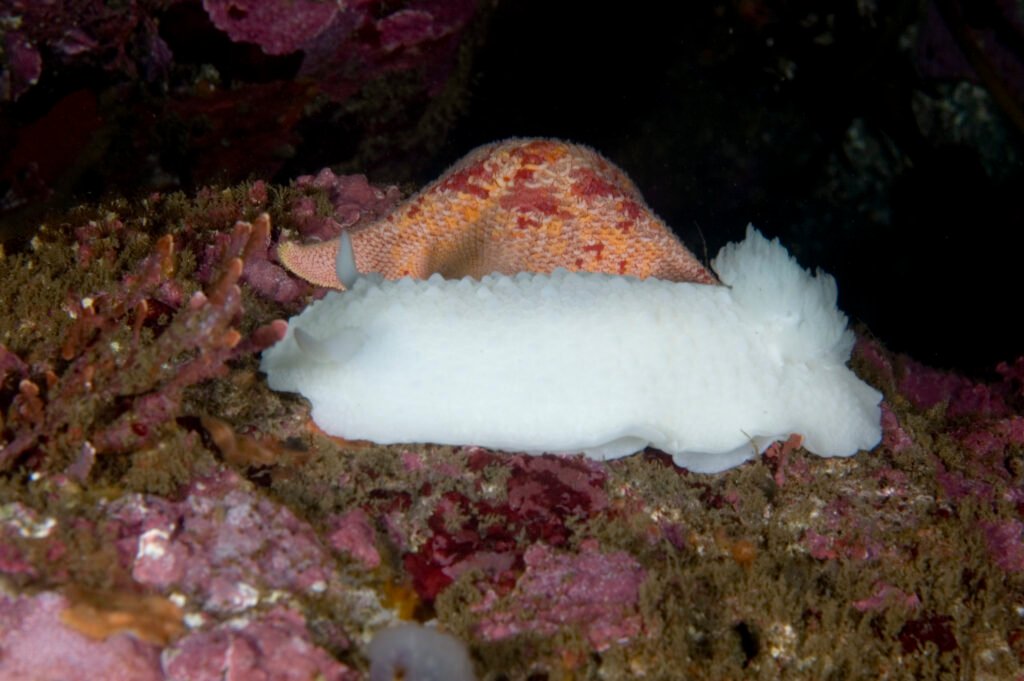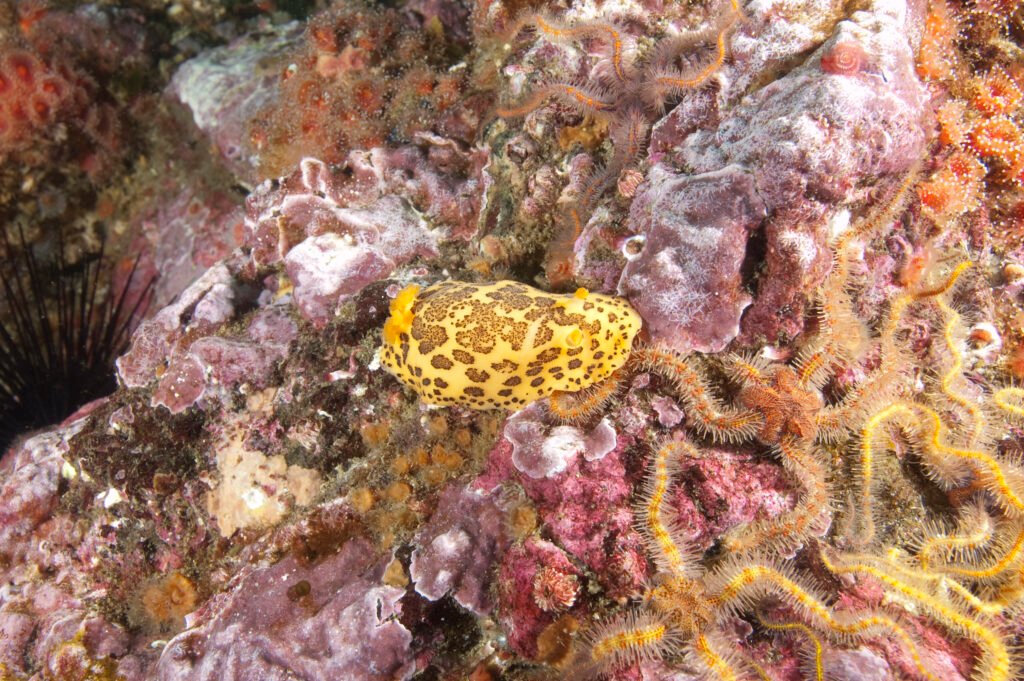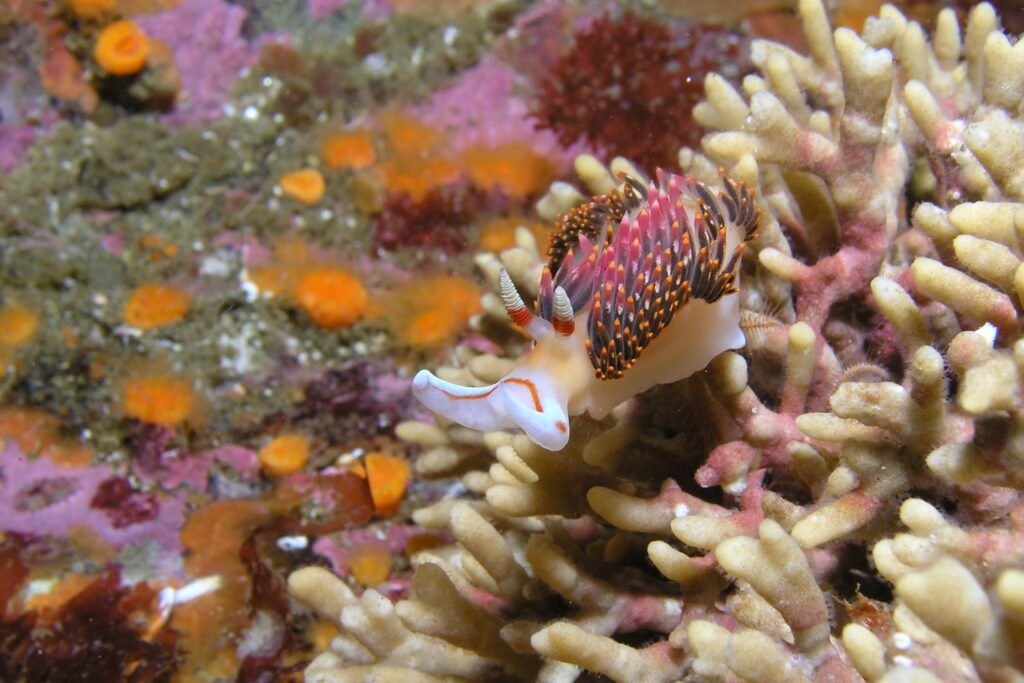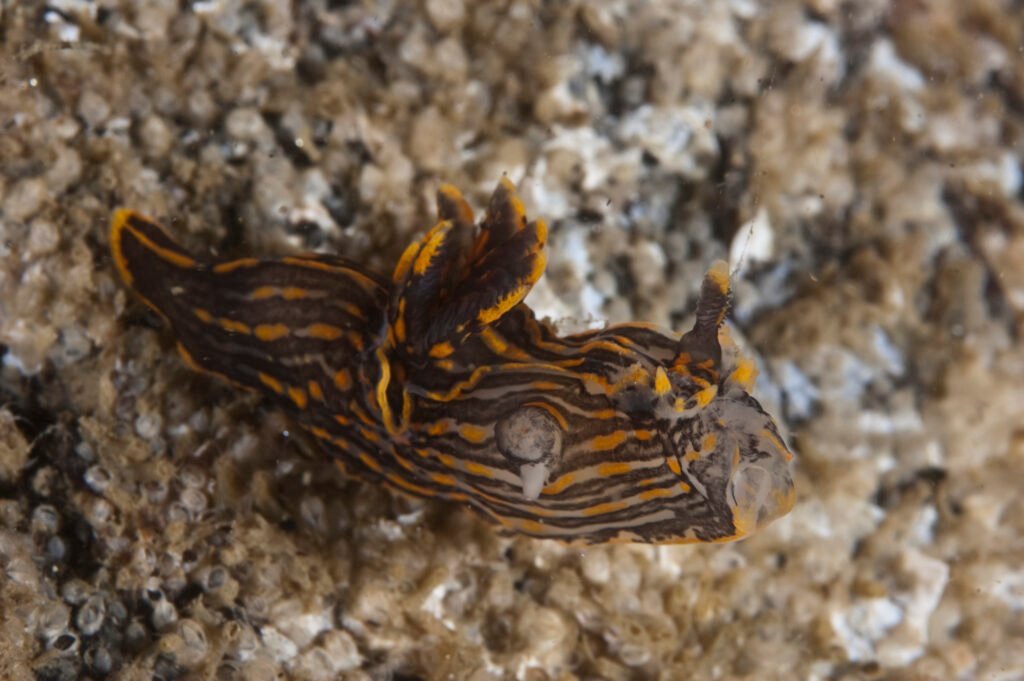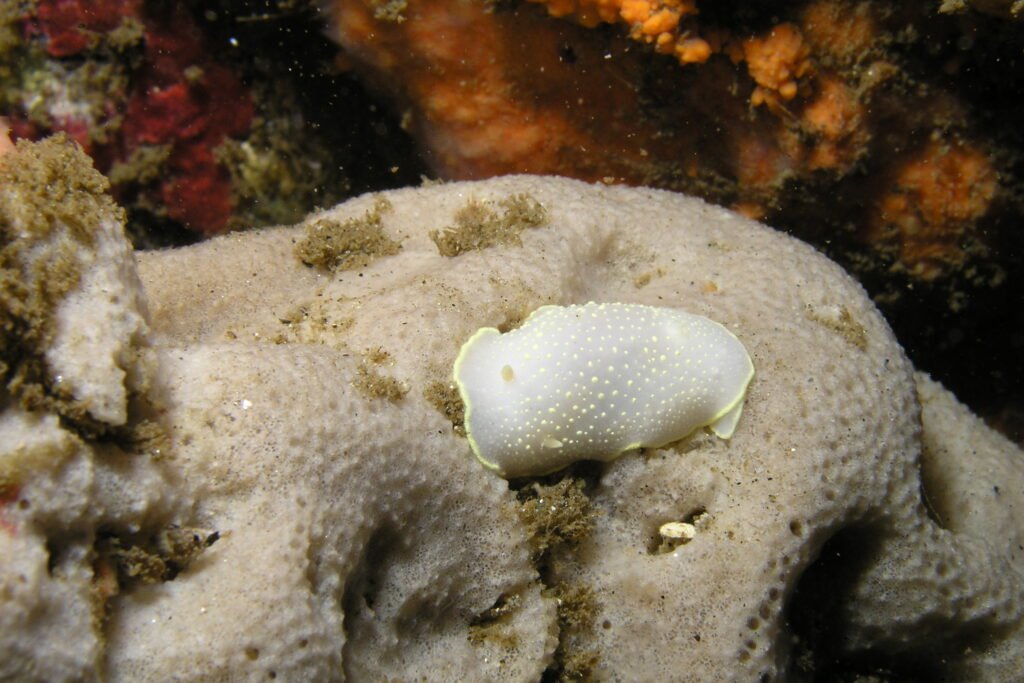Physical Description
Branched Dendronotus, Dendronotus venustus, formerly known as Dendronotus frondosus, exhibits a translucent greyish-white ground color. Its body features irregular patches of yellow-green to brown-green, with smaller spots of olive to pale green and pale yellow to bright orange. Low conical papillae on the body are tipped with yellow. The 5-6 opposite pairs of cerata bear rather short branches, flecked with yellow distally; cores are light green to brown. The frontal veil bears 4-8 branched, tapered processes, with two larger ones on either side of the median line. Rhinophores have 6-14 lamellae, and the rhinophore sheath bears 4-5 branched processes.
Habitat and Geographical Range
Branched Dendronotus can be found along the eastern Pacific coast, inhabiting various marine environments, including rocky substrates.
What They Eat and How They Breed
This species likely feeds on cnidarians, such as hydroids or sea anemones, using specialized structures called radula to rasp off their prey’s tissue. Like other nudibranchs, it is a simultaneous hermaphrodite, meaning it possesses both male and female reproductive organs. Breeding involves the exchange of sperm between individuals, followed by the laying of eggs in gelatinous masses on suitable substrates.
Physical Threat to Humans
Branched Dendronotus poses no physical threat to humans. It is harmless and does not exhibit aggressive behavior toward humans.
